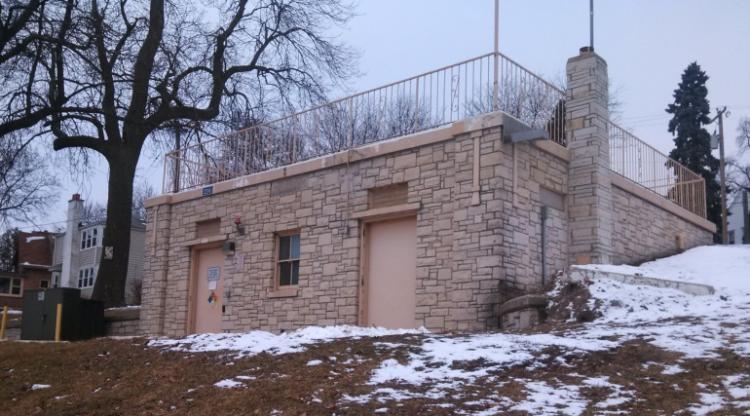
Well 8 Groundwater Study Update

Updated 10/17/2017
(Read the final PCE Plume Evaluation Report here)
For more than a year, hydrogeologist Eric Oelkers has been combing through page after page of groundwater monitoring data collected by Madison Kipp Corporation to measure the size and location of a plume of tetrachloroethylene, or PCE, leaked from the plant some 50 years ago.
“Madison Kipp has about 61 monitoring points. They’re not all individual wells. They have 42 individual locations, and some of them have multiple monitoring depths.”
Oelkers was hired as a consultant by Madison Water Utility, which has a seasonal municipal water well (Well 8) located in Olbrich Park, about 600 feet from the plume. His research for the utility had two main goals.
“One is to see if we agree with Kipp’s consultants’ conclusion that the plume is stable or decreasing based on monitoring that they’re doing,” says Oelkers. “The second is to figure out where we would put a monitoring well, or more than one monitoring well, to act as a sentinel up-gradient to Well 8.”

“The information that we have from Kipp so far does suggest that the plume is probably pretty mature, that it’s not – where we’ve seen it –increasing dramatically.”
Oelkers says from the data he’s studied, there do appear to be nine monitoring wells that show increasing contamination. But those wells are on the opposite side of the plant from Well 8.
“Most of the wells that are showing some increase are north and west of the center of the problem … Whatever I’ve seen in those wells was not alarming, not as though there was some major breakthrough happening.”
Still, Oelkers believes there is a shortcoming in Madison Kipp’s monitoring plan –none of the wells penetrate the Eau Claire Shale, the geological formation that separates the upper and lower aquifers below Madison.
“The wrinkle we have with the existing monitoring network is that none of their wells penetrate into the aquifer that’s producing the water for Well 8 – the lower aquifer. Concentrations (of PCE) do seem to decline pretty substantially from the highest concentrations in the upper bedrock to the point where they get down to the lowest monitoring wells, which are just above the Eau Claire Shale. But if there was to be a spot of the Eau Claire Shale that’s not very thick, or if there was a fracture that penetrates through it, there is the potential that something could get drawn in there.”
Oelkers' final report recommends that Madison Water Utility install a monitoring well that allows sampling of water from the lower aquifer. Oelkers has determined that a small sentinel well drilled in an area northwest of Well 8 should give Madison Water Utility its best chance of catching contamination if it moves toward the well. But he cautions that finding a general location is only the first challenge.
“We can come up with a best guess. And does that mean it’s going to go in the terrace in front of somebody’s house? You’ve got to find scientifically the most defensible place to put it, and then reality sets in, and you have to figure out where you can actually do it. Drilling a well like that is not a one day operation. It’s probably going to take a few days at a minimum. Depending on the drilling method, it could produce quite a large amount of water that has to be dealt with. So there are some logistical challenges.”
Madison Water Utility will now work to determine an exact location for the monitoring well, which will be about six inches in diameter. Once the sentinel well is in place, samples will likely be drawn and analyzed quarterly for the first two years to collect background data, then twice a year after that.